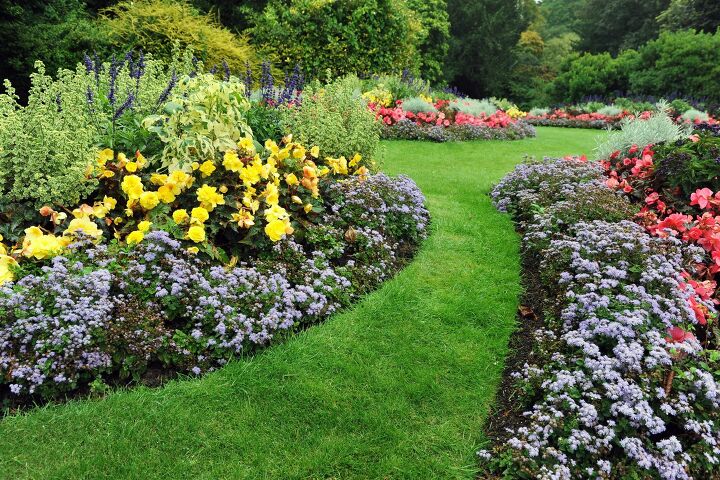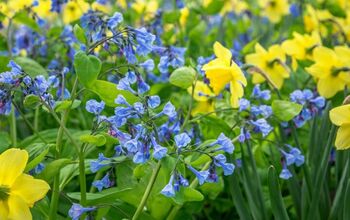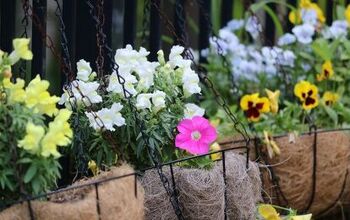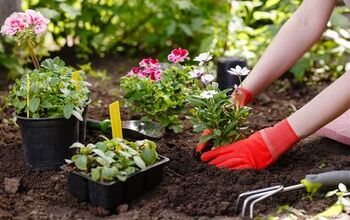Best Flowers To Plant In Spring

Spring is the most important time to plant most flowers. Not all flowers will thrive and grow if you plant them in spring, however, so it’s important to choose the right ones. What are the best flowers to plant in spring?
The best flowers to plant in spring are diascia, pansies, sweet peas, and marigolds. Black-eyed Susan, zinnias, and bluebells will also thrive if you plant them in the spring. Flowers like alliums, primroses, columbines, and daffodils bloom and grow quickly if you plant them in spring.
You can ensure growth if you plant flowers in spring because they will be in full bloom by the time it gets hot. The last thing you want is to wait until summer to plant flowers. In that case, they may only look great for a few months before they die in the fall. Follow along as we highlight the best flowers to plant in spring.
What Flowers Should You Plant in Spring?
1. Diascia
Nothing screams spring like the vibrant, purple flowers that diascia produce. While diascia is delicate, it is low-maintenance and only needs water once per week unless it’s too hot out. You need to water a diascia when the top layer of soil becomes dry.
Ideally, you should plant diascia in full sunlight. However, these plants can handle partial shade as long as they get a few hours of sunlight in the morning.
2. Pansies
Pansies are beautiful, low-maintenance, and one of the best flowers to plant in spring. They require water once per week or as needed when the soil becomes dry. Pansies first bloom in the spring and again in the fall.
They are technically considered perennials, but you typically need to plant them again to ensure they will come back. In some cases, pansies can survive the winter. Pansies are more likely to survive throughout the year if you live in a calm climate without harsh winters and overly hot summers.
3. Sweet Pea
While they have a short lifespan, sweet peas are among the best flowers to plant in spring. Sweet peas typically die after a year, but they will bloom quickly when you plant more seeds. You only need to water sweet peas 2-3 times per week unless it’s too hot outside.
Sweet peas are edible and you can even make them into tea. They have many health benefits and are useful for people with arthritis and joint problems. Sweet peas come in a variety of colors and can add character to any garden.
4. Marigold
The yellowish-orange flowers that marigolds produce are instantly recognizable. This common spring flower is both annual and perennial depending on the variety and where you live. They often die in the fall, but marigolds are vibrant and durable throughout the spring and summer.
Marigolds attract bees, which is good news for the rest of your garden. Bees are especially crucial during the spring when they can help pollinate your other plants. Plant marigold seeds after the last frost of the year for the best results.
5. Black-Eyed Susan
Black-eyed Susan is an iconic plant with recognizable flowers. These spring flowers require full sunlight and can even thrive in extreme heat. One of the key benefits of black-eyed Susan is that it grows quickly.
This is great news if you want to quickly populate your garden with vibrant flowers. Depending on where you live, black-eyed Susan flowers can survive the winter. They are durable and can withstand extreme heat and cold temperatures.
6. Zinnias
Zinnias are among the best annual flowers to plant in spring. You can plant zinnias each spring and count on them blooming and thriving quickly. Zinnias are low-maintenance and you only need to water them 2-3 times per week in most cases.
Watering zinnias too much is just as bad as failing to water them. Zinnias are quite sensitive to overwatering, so you should only give them water if the soil is dry. Many homeowners plant zinnias near grasses because they can thrive alongside each other.
8. Bluebell
Bluebell flowers have a unique appearance that is unlike any other plant on this list. The downward-facing flowers look like tiny bells that perfectly contrast the stalks. These perennials will look great in your garden year after year.
Bluebells only require water once per week in most cases. They do well when you plant them near red campion and stitchwort. Choose rich soil that features as many nutrients and as much organic matter as possible so that it will thrive.
9. Lungwort
While the name may not sound appealing, lungwort is beautiful. This perennial flower changes from red to purple during its blooming cycle. Lungwort only requires water twice per week unless the soil dries out.
Ideally, you should prune lungwort once or twice per year for proper growth. You can even eat lungwort and many gardeners put its leaves in salad. Its texture is similar to spinach, and you can even grill or steam the leaves.
10. Daffodil
Daffodils are iconic spring flowers and they come back every year. You are likely familiar with daffodils and their gorgeous yellow flowers. However, you may not know that planting daffodils can improve the growth of the other flowers in your garden.
That is because they attract bees which can help pollinate your other plants. Daffodils also attract butterflies and hummingbirds in many cases. They only need water once per week and you don’t typically need to prune them.
11. Columbine
Columbine is a great flower for those who struggle to take care of plants. That is because it’s so easy to take care of them and they don’t require too much water. Plant your columbine flowers in a spot where they will have full sunlight.
Columbine requires water once per week and does best in soil that drains well. Otherwise, columbine is susceptible to getting waterlogged, which can kill it. Acid or neutral soil is ideal for columbine.
12. Snapdragon
Snapdragon is one of the most distinct-looking flowers to plant in spring. You must be patient, as snapdragons can take up to 3 months to flower. Seeds take up to 21 days to sprout, so it’s important to start them right away after the final frost of the winter.
Be careful to not overwater your snapdragons. An inch of water per week is ideal for snapdragons and any more than that can damage the roots. You can even eat snapdragon blooms or brew them in tea.
13. Primrose
Primrose is a gorgeous yellow flower that loves water. You can ensure that your primrose flowers will thrive if you keep the soil moist. They do well in humid climates but can grow in most zones in the United States.
It can take up to 6 weeks for primrose to bloom. However, you can expect primrose to thrive over the first year. Primrose is a perennial and it’s a staple of many colorful spring gardens.
14. Creeping Phlox
Creeping flowers are often overlooked during the spring. However, they can add character to your garden and complement the pot, soil, or nearby plants. Creeping phlox comes in with blue or purple flowers that grow closer together than many other creeping plants.
They only grow 6” tall but will spill over the pot or enclosure if you water them enough. You can water creeping phlox once per week without damaging the roots or letting them dry out. The roots are sensitive, so you should never water creeping phlox if the soil feels moist.
15. Allium
Alliums are beautiful flowers that are prominent during the spring and summer. After the summer, allium flowers die off and wait until the next spring rolls around to bloom again. The unique, bulbous flowers stand out on top of the thin, green stems.
These are also great flowers if you don’t have time to maintain them. Alliums can survive even if you only water them once every 10 days. You can prune the leaves and brew them into a delicious tea as well, and this is a great idea when they die at the end of summer.
Summing It Up
Diascia, pansies, sweet peas, and marigolds are the best flowers to plant in spring. Other flowers like black-eyed Susans, zinnias, bluebells, and lungwort do well in the spring and summer.
Daffodils, columbine, snapdragon, primrose, and creeping phlox will thrive during the summer if you plant them in the spring.
Related Guides

Nick Durante is a professional writer with a primary focus on home improvement. When he is not writing about home improvement or taking on projects around the house, he likes to read and create art. He is always looking towards the newest trends in home improvement.
More by Nick Durante
















![Cost To Drill A Well [Pricing Per Foot & Cost By State]](https://cdn-fastly.upgradedhome.com/media/2023/07/31/9074980/cost-to-drill-a-well-pricing-per-foot-cost-by-state.jpg?size=350x220)










